Ixia Common Varieties And Growing Guidelines: Drainage Is Particularly Important

BULBS > IXIA

Elizabeth is a Permaculture Garden Designer, Sustainability Consultant and Professional Writer, working as an advocate for positive change. She graduated from the University of St. Andrews with an MA in English and Philosophy and obtained a Diploma in Applied Permaculture Design from the Permaculture Association.
Reviewed By COLIN SKELLY

Colin is a Horticulturist and Horticultural Consultant with experience in a range of practical and managerial roles across heritage, commercial and public horticulture. He holds the Royal Horticultural Society’s Master of Horticulture award and has a particular interest in horticultural ecology and naturalistic planting for habitat and climate resilience.
IXIA GUIDES
Ixia is a genus of short-lived perennials that gives us a number of ornamental plants referred to as ‘African Corn Lilies’.
They grow from corms (sometimes called bulbs) and might be grown as annuals in the UK or given a protected site in winter to make it through to subsequent years.
Ixias are South African plants which bloom in an interesting variety of colours, producing attractive, star-shaped blooms.
Overview
| Botanical Name | Ixia |
| Common Name(s) | African corn lily |
| Plant Type | Perennial |
| Native Area | South Africa |
| Hardiness Rating | H2 |
| Foliage | Deciduous |
| Flowers | Colourful, star-shaped blooms |
| When To Plant | September to October |
Sunlight
Preferred
Full sun
Exposure
Sheltered
Size
Height
0.1 – 0.5M
Spread
0.1 – 0.5M
Bloom Time
June to July
Soil
Preferred
Sand or clay
Moisture
Well-drained
pH
Any
They are typically in flower in June and July here in the UK.
The star-shaped flowers form on wiry stems and make great cut flowers, so they are often used in floral arrangements and for cut flower displays inside the home – as well as looking good in the garden.
Though not necessarily the easiest plants to grow in wetter, cooler regions of the UK, they can potentially be a good choice for the warmest and most arid regions, since these plants appreciate warm and relatively dry conditions.
“The warmest winter locations in the UK also tend to be the wettest, such as on the western coasts,” explains Master Horticulturist Colin Skelly.
“Growing in raised beds on slopes and sandy soils will help Ixia bulbs survive outside in milder regions.”
Common Varieties
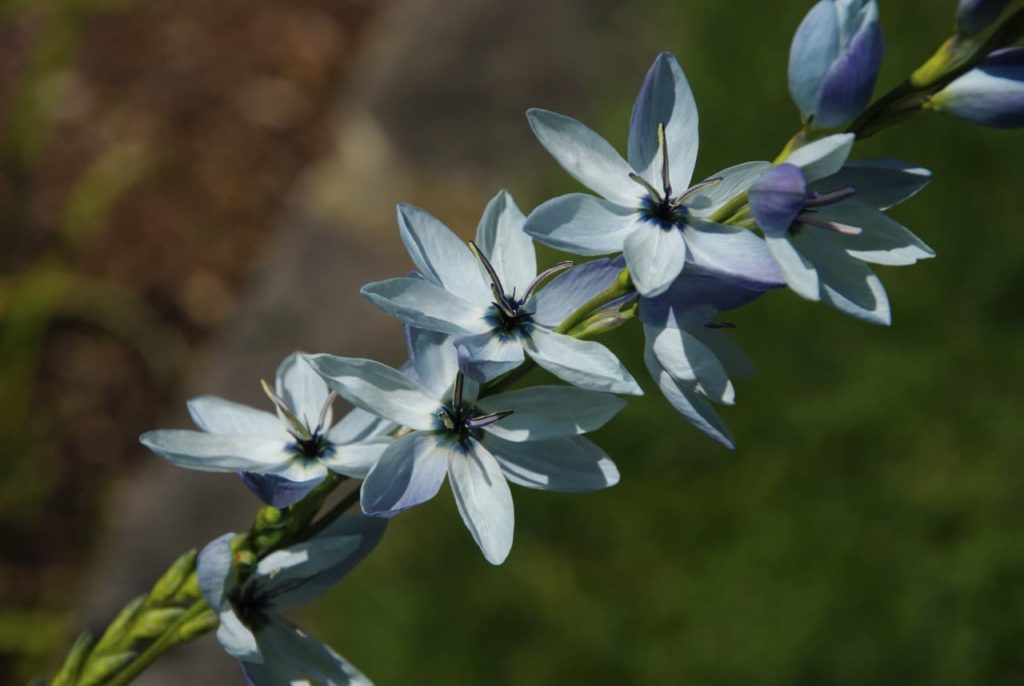
Some Ixia varieties to grow include:
- I. ‘Rose Emperor’
- I. ‘Spotlight’
- I. trichorhiza
- I. ‘Venus’
- I. viridiflora ‘Green Jade’
How To Grow Ixia
Ixia can be grown in the ground when grown as annuals or potentially as perennials in the very mildest parts of the UK, where frosts are not typically expected.
They can also be grown in containers, which can be a good idea for most growers in the British Isles because it allows for them to be brought indoors or undercover before colder weather arrives.
The bulbs can begin to experience damage when temperatures fall below -2°C.
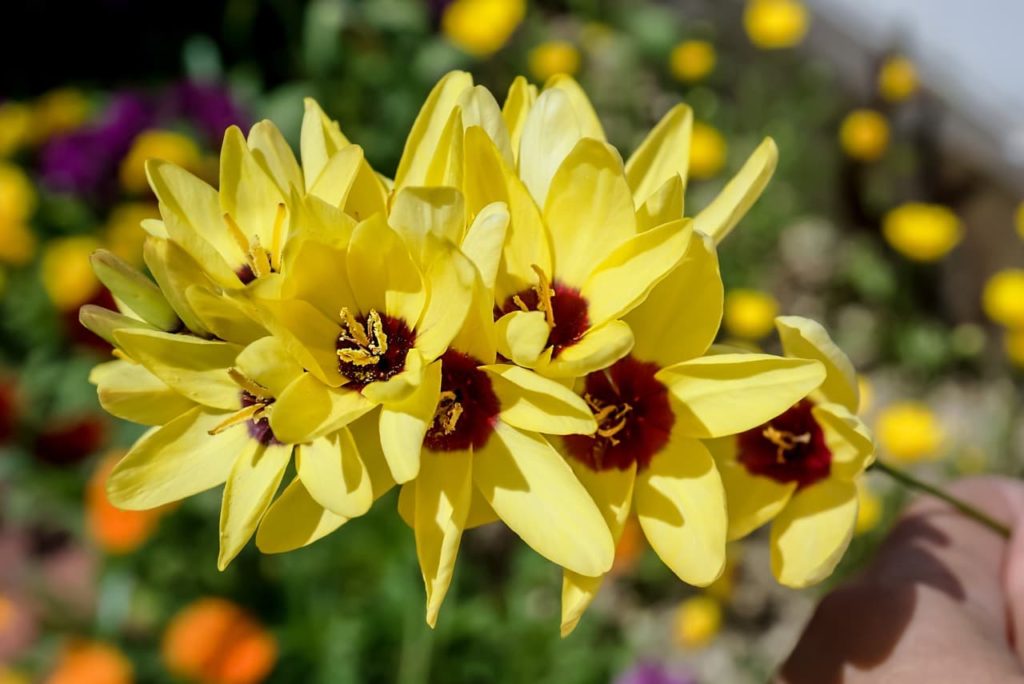
Winter wet can also be an issue, even sometimes more of an issue than the winter cold, so they must be protected for winter in most areas.
Containers can be moved to a heated area indoors or in a greenhouse.
Corms left in the ground might also, in milder areas, simply be protected with a thick organic mulch in winter or you can lift the corms and store them until the following year.
Preferred Sunlight
Ixia needs to be grown in as warm a location as possible in full sun.
They will not thrive or bloom well in a cooler or more shaded spot and need to be sheltered from the wind and cold breezes.
They can be placed in a location with a south, east or west-facing aspect, as long as it is a sheltered and warm spot with full sun.
Soil Requirements
Ideally, Ixia will be placed in sandy soil that is free-draining or an equally free-draining potting mix in a container.
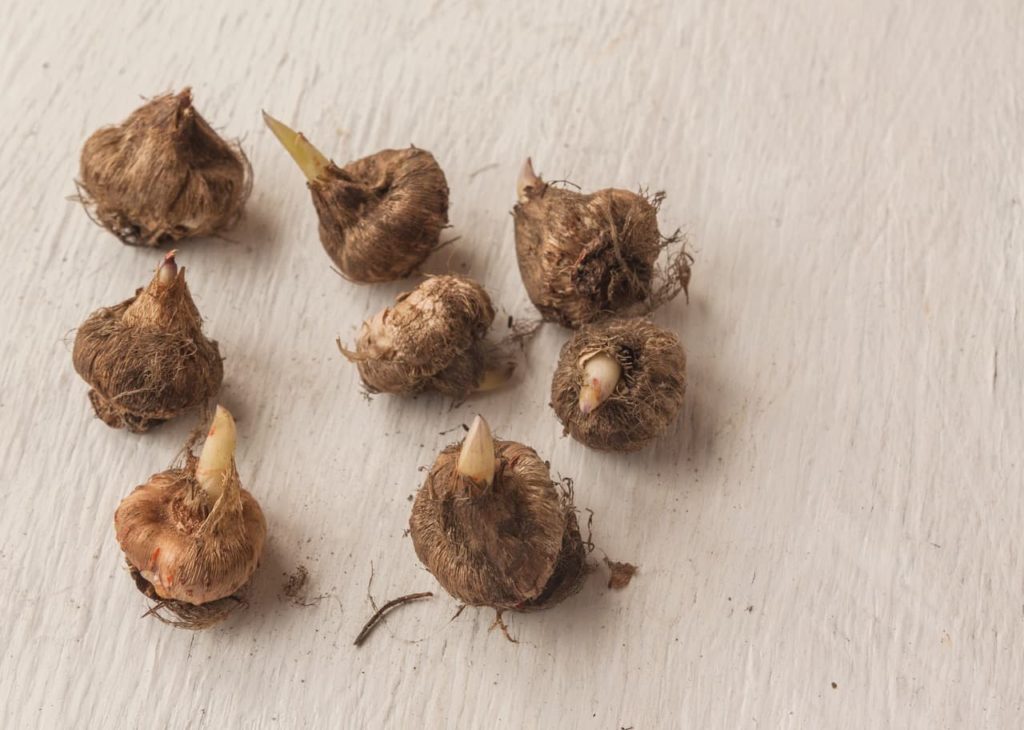
Drainage is particularly important as the corms have a tendency to rot if growing conditions become waterlogged.
Planting Ixia Bulbs
The bulbs of Ixia should be planted in a heated greenhouse or indoors, 10-15cm deep and 5-8cm apart, in pots filled with free-draining, peat-free potting mix.
A loam-based compost such as John Innes no. 2 or a homemade equivalent with added sharp sand and leaf mould will be ideal.
A location with low to moderate humidity will be perfect for these plants, and remember to make sure they get plenty of light.
Ixia Care
Meeting the basic needs of these plants involves thinking carefully about how the correct environmental conditions can be maintained throughout the different seasons during the lifecycle of these plants.
Feeding
Once these plants flower, it is a good idea to feed your Ixia every couple of weeks or so throughout the rest of the growing season until the foliage begins to die back naturally.
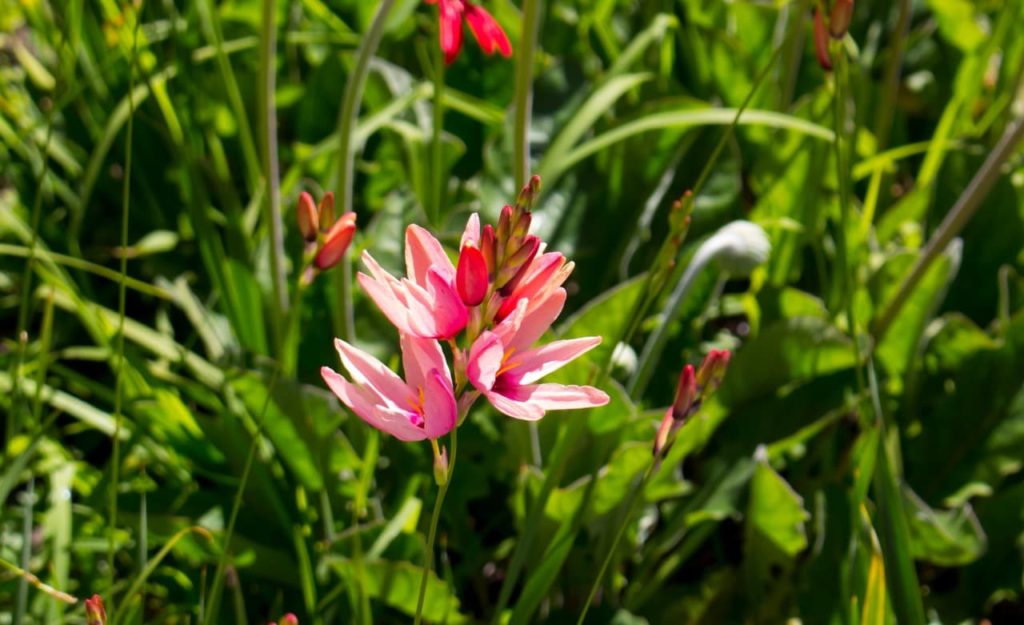
Use a potassium-rich, organic, liquid plant feed.
You can, if you wish, make your own using comfrey or other plant matter that is rich in potassium.
Watering
Water only sparingly until flowers appear, then when the flowers bloom, water freely and deeply.
It is important to make sure that excess water can always drain away freely.
Propagation
Ixia corms can be lifted in autumn and stored for the following year.
While dormant, they should be stored in dry and frost-free conditions.
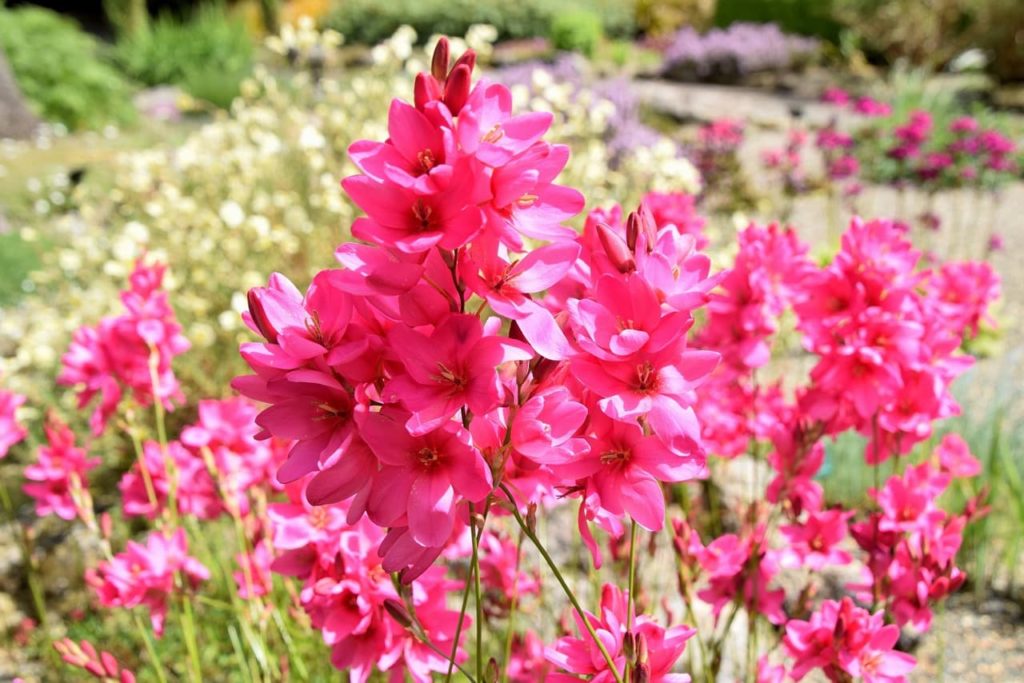
You can also propagate these plants from seed or you can separate offsets that form around mature corms while the plants are in a dormant state in the late summer.
However, note that seed-grown plants will not flower for around 3 years, so patience will be required.
Deadheading
You do not need to deadhead Ixia, but many gardeners will choose to cut the blooms for use as cut flowers inside their homes.
It is important not to cut back the foliage after flowering.
Let this die back naturally so the energy it collects is stored in the corm for the following year.
Common Problems
Ixia is generally pest and disease-free, so most of the problems that you are likely to encounter will be down to the environmental conditions not being quite right or improper care.

In particular, make sure temperatures don’t drop too low, ensure waterlogging does not occur and make sure that the plants get plenty of sun and as much warmth as possible to keep them happy and healthy.
